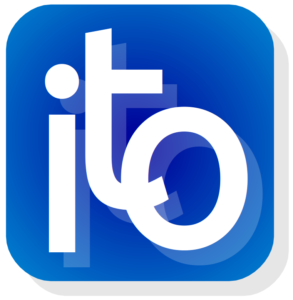Recruiting top software developers is no easy feat, especially in today’s competitive market.
One of the most significant challenges is creating a job post that not only attracts the right talent but also sets clear and realistic expectations.
However, many companies fall into common traps that can turn potential candidates away.
Below are seven common pitfalls to avoid when crafting your next software developer job post.
1. The “Text Brick” Phenomenon
One of the biggest mistakes companies make is creating job posts that are overly long and dense. When a job posting looks like a solid block of text, it becomes overwhelming and difficult to read. This can discourage even the most interested candidates from applying.
Tip: Break down the content into digestible sections with clear headings and bullet points. This makes the job description easier to navigate and more inviting.
2. Unrealistic Skill Requirements
Another common pitfall is the “unicorn” job description that demands a combination of skills that no single person is likely to possess. For example, asking for someone who is a Fullstack Developer, DevOps engineer, and UX/UI designer all in one. This not only limits your pool of applicants but also sets up unrealistic expectations for the role.
Tip: Focus on the essential skills required for the job. Clearly differentiate between must-have skills and nice-to-have skills. This will attract candidates who are genuinely a good fit.
3. Misleading Job Titles
Using vague or buzzword-heavy job titles like “Ninja,” “Rockstar,” or “Guru” can be confusing and unprofessional. These titles don’t accurately convey what the job entails and can turn off experienced professionals who are looking for serious career opportunities.
Tip: Stick to clear, descriptive job titles that reflect the actual responsibilities of the role. This ensures that your job post will reach the right audience.
4. Overlooking Company Culture
Candidates today care deeply about company culture. However, many job postings either gloss over this aspect or present it in a way that feels insincere. Phrases like “We’re a family” can come across as clichés rather than meaningful insights into the company’s work environment.
Tip: Be specific about your company culture. Highlight your commitment to diversity, work-life balance, and professional growth. Include testimonials or examples that showcase your company’s values in action.
5. Lack of Salary Transparency
One of the quickest ways to lose a candidate’s interest is to be vague or secretive about salary. While it’s common for companies to leave this information out, doing so can waste both your time and the candidate’s time.
Tip: Include a clear salary range in your job post. This shows transparency and helps set expectations from the start, ensuring that applicants are aligned with your budget.
6. Complicated Application Processes
Even if a candidate is excited about the job, a complicated or lengthy application process can deter them from applying. Requiring multiple forms, coding tests, or portfolio submissions before any initial conversation can be off-putting.
Tip: Simplify the application process by asking for the essentials—like a resume and cover letter—and consider additional steps later in the process. Make it easy for candidates to express their interest and get in touch.
7. Ignoring Growth Opportunities
Many job postings focus solely on what the company needs from the candidate and forget to mention what the candidate will gain. Neglecting to talk about career progression, learning opportunities, or mentorship can make the role seem less attractive.
Tip: Highlight the growth opportunities available in the role. Whether it’s professional development, career advancement, or access to new technologies, make sure candidates know how this job will help them grow.
Recap
Creating a compelling job post is about more than just listing requirements and responsibilities.
By avoiding these common pitfalls, you can craft a job posting that not only attracts the right candidates but also sets the stage for a successful hire.
Remember, your job post is often the first impression a potential candidate will have of your company: Make it count!
Note the appendix below, containing an example of a high-quality job posting for a software developer.
#JobPostingTips #Recruitment #SoftwareDevelopment #Hiring #TechRecruitment #CareerGrowth
Follow me on …
LinkedIn: https://www.linkedin.com/in/adyhrberg/
Appendix
Example of a high-quality job posting for a software developer
Here’s an example of a high-quality job posting for a software developer with expertise in PHP, MySQL, JavaScript, CSS, and HTML.
The focus is on clarity, realism, and highlighting the opportunities and culture within the company.
Job Title: PHP Software Developer
Location: Remote or On-Site in [City, Country]
Type: Full-Time
Experience Level: Mid-Level (3-5 years of experience)
About Us
At [Company Name], we’re passionate about building innovative web solutions that solve real-world problems. We’re a growing team of creative thinkers, developers, and designers, committed to fostering a collaborative and inclusive work environment. Our products are used by thousands of users daily, and we take pride in delivering high-quality software that makes a difference.
What You’ll Do
As a PHP Software Developer, you’ll be an integral part of our development team, working on both new and existing projects. You will collaborate with cross-functional teams, including designers, project managers, and other developers, to build and maintain our web applications.
- Develop and maintain web applications using PHP, MySQL, JavaScript, CSS, and HTML.
- Work closely with designers to translate mockups and wireframes into responsive, user-friendly interfaces.
- Optimize database queries and ensure the application performs efficiently, handling large amounts of data.
- Participate in code reviews to maintain code quality and consistency across the team.
- Collaborate in planning sessions to define the scope and requirements of new features and projects.
- Troubleshoot and debug issues across different browsers and devices to ensure a seamless user experience.
- Stay updated on industry trends and best practices to continually improve our processes and technologies.
What We’re Looking For
- 3-5 years of experience in software development, particularly with PHP and MySQL.
- Proficient in JavaScript, CSS, and HTML with a solid understanding of how to create responsive, cross-browser-compatible web applications.
- Experience with MVC frameworks (e.g., Laravel, Symfony) is a plus.
- Familiarity with version control systems like Git.
- Strong problem-solving skills and the ability to work independently as well as in a team.
- Excellent communication skills and the ability to articulate complex technical concepts to non-technical team members.
- A commitment to continuous learning and improvement.
Nice to Have
- Experience with frontend frameworks like React or Vue.js.
- Knowledge of API design and development.
- Familiarity with DevOps tools and practices (e.g., Docker, CI/CD pipelines).
- Background in e-commerce or large-scale web applications.
What We Offer
- Flexible work hours and the option to work remotely.
- Professional development opportunities including access to conferences, workshops, and online courses.
- Health and wellness benefits, including comprehensive medical insurance.
- Collaborative and inclusive culture that values diversity and encourages innovation.
- Opportunities for career growth and advancement within the company.
- Regular team-building activities and company retreats.
How to Apply
If you’re excited about this opportunity and believe you’re a good fit, we’d love to hear from you! Please send your resume, a brief cover letter, and any relevant work samples or portfolio links to [email@example.com].
Application Deadline: [Date]
[Company Name] is an equal opportunity employer. We celebrate diversity and are committed to creating an inclusive environment for all employees.
This example includes all the necessary details while ensuring that the job expectations are realistic and aligned with the role. It also highlights the company’s culture, growth opportunities, and the application process, making it clear and attractive to potential candidates.


